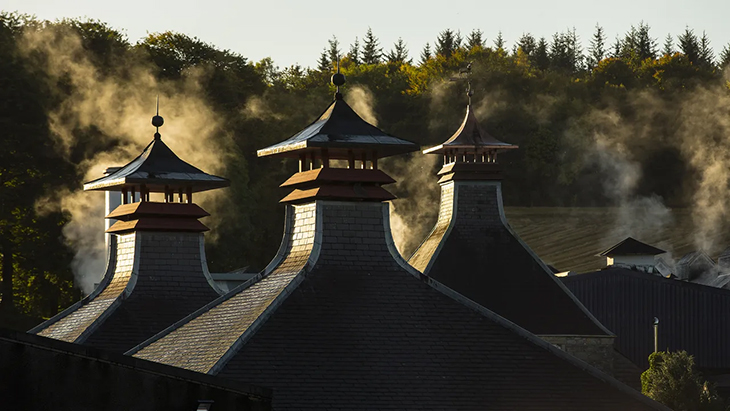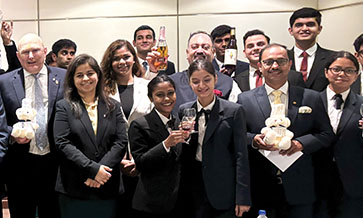Glenfiddich’s 21-YO expression ‘Gran Reserva’ was recently re-launched in India. A scientist by training, Brian Kinsman, Glenfiddich’s sixth Malt Master, spoke with Roy Thomas on what goes into the making of the world’s most-awarded single malt whisky and what makes it so special. Excerpts:
What can you tell us about the William Grant story?
Our story is not complete without mentioning how and when we started. The Glenfiddich distillery was founded by William Grant on Christmas day in 1887. It began operations with pioneering single malt Scotch whisky. Glenfiddich whisky from William Grant & Sons proved successful and so, in 1892, he built a second distillery next door in Dufftown, known as the Balvenie Distillery.
William Grant & Sons has been family-owned since its creation and has been run by five generations of the same family. And yes, the story is still being written as we speak!
Glenfiddich holds an iconic position in the world of Scotch. Could we hear from you what it is that gives the brand its aura?
Glenfiddich is one of the few single malt distilleries to remain entirely family owned and is now the world’s most awarded single malt Scotch whisky. Water, air and malted barley: a trinity expertly crafted to make a Glenfiddich whisky.
An important factor for a distillery is that you’ve got to have a good source of water and we’re very fortunate that the distillery was effectively built around a high-quality water source. So the very heart of the product, the single source of water, is very important.
Why did you choose Gran Reserva for launching in India? Did it have anything to do with the Indian palate?
Actually, the 21-YO expression has been available in the Indian market for over 10 years. What we have done is bring in a more modern and contemporary packaging and also tweaked the blend a bit. Gran Reserva in its brand-new avatar is also concurrently being launched globally.
What makes Glenfiddich different from the others in the market?
For me as the whisky maker, there are two major differences: one is just the age statement. By the time the whisky reaches 21 years, it’s got this naturally rich, sweet flavour profile. We use a lot of American oak, so it accentuates the sweet toffee-type notes.
But the thing that truly makes it different is the rum cask finish. We basically fill into very vibrant ex-Caribbean rum casks. We actually mature the rum at the distillery so that we can control the consistency of the casks!
We empty the casks and the 21-YO goes in there for about 4 months, just enough to add an extra fruitiness and sweetness, and accentuate the natural flavours of the whisky.
The whisky is probably the sweetest in our portfolio. It is the most vibrant, fruity, and sweet rather than some other whiskies which are deeper and oaky. So that definitely sets it in the more vanilla-coffee space.
What about the manufacturing process? What goes into making this a world-class whisky?
We’re very fortunate that our distillery was effectively built around a high-quality water source. The whisky was filled in the casks more than 21 years ago and mostly matured in American oak, with a small percentage of it also being matured in Spanish oak. There is a ratio of around 9:1 American oak to Spanish oak.

William Grant & Sons has been family-owned since 1887 and has been run by five generations of the same family.
Could you tell us something about the flavour and taste of the whisky?
American oak naturally lends the sweet, vanilla, fruity style to the whisky. The Spanish oak tends to give it the deeper, oilier and more intense flavours. By blending the two together, we get all the natural sweetness from the American oak with a little bit of texture and complexity from the Spanish oak.
After that, it goes into the rum casks for about 3-4 months. I would sample the whisky every month since I didn’t want the rum cask flavours to dominate – I didn’t want it to be the hero of the show. I just wanted to take the core flavour that’s already in the Glenfiddich and lift it a little bit.
The analogy I would use is that it’s like polishing a really nice old piece of furniture. The polish just makes it look so much better and vibrant; but the polish itself isn’t the centre of attention. So the whisky is the hero and the rum cask just showcases it a little better.
Is climate change something that concerns you at this point in time?
Yes, I am concerned. Is it currently affecting us? No, thankfully. The thing we are most concerned about would be our source of water and rainfall.
We are fortunate that we can grow the barley almost anywhere. But if the region for barley growing changes due to change in rain, then it would affect our product since it is greatly influenced by the natural climate around the facility.
So yes, we are concerned, we’re just more concerned as citizens rather than being concerned about production. But to do our part, we’re on the pathway of moving towards net zero-waste production. We’re not there yet, but we’ve got a lot of energy regeneration, we get a lot of green energy out of the facility waste.
We will definitely talk more about it over the years because we are very conscious about it – we have to be!
What about the new packaging? How is it different in comparison to the old one?
We actually introduced the triangular bottle to the company around 1957-58. In 1963, Glenfiddich was the first globally marketed single malt whisky. The family then decided to put it in the unique triangular bottle.
This bottle was designed by a man called Hans Schleger, a German guy who was commissioned by William Grant & Sons. The bottle is quite iconic because we are to only company to have that shape.
However, the 21-YO’s packaging is quite innovative and reflective of the William Grants style of designs. The warmth and the depth of the whisky and the influence of the Caribbean cask is something that we have tried to depict on the box as well as the bottle.
The gold foiling has changed from the previous packaging, and the touch and feel has become more luxurious in terms of the weight, the crown, all the way to the small cork of the bottle.
I know many people in the whisky circuit who don’t even drink half of the bottles they buy; it’s just to put on their shelves at home and to make their guests admire the beautiful bottles!
All those points are taken into consideration when we design the bottle. I think we’re blessed and super thankful for the design team we have at the Glenfiddich office for that.
Speyside, where you are located, is considered the Scotch capital of the world and the whisky festivals are well-known and extremely popular…
We have one big one every year called the Speyside Whisky Festival, and a couple of smaller ones. The larger ones are always in the beginning of May, which is a fabulous time to visit.
So many people from around the world make a trip to Scotland at this time. There are around 50 distilleries you can visit during that period. Obviously you’d come to Glenfiddich first! But yeah, it is a great part of the world to visit when the festivals are on!














